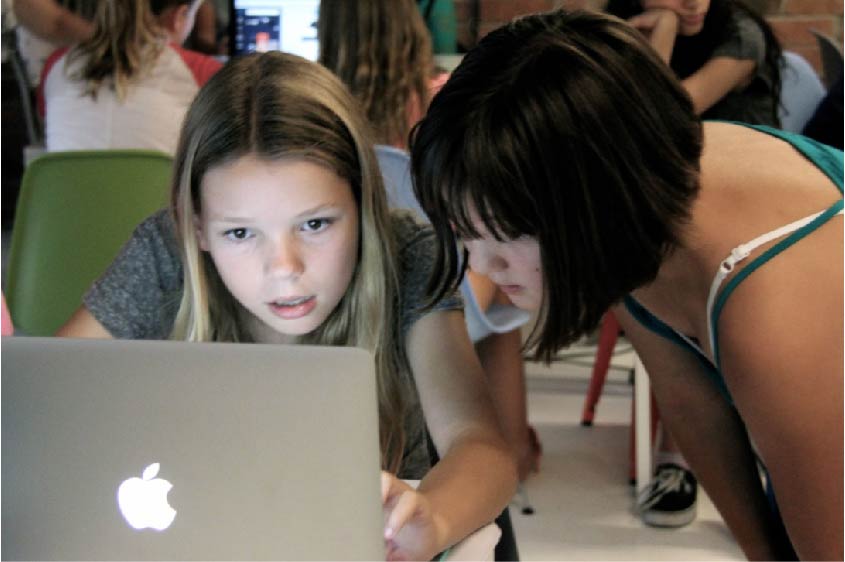Lauren, an 11-year-old girl in Calgary, recently launched her own robotics company. Latasia 12, built a sobering webpage that seeks to curb violence against indigenous women in Canada.
In a world where males routinely dominate STEM (science, technology, engineering, and mathematics) fields and computer science programs, Lauren and Latasia are exceptions to the status quo. The two have something else in common, as well: Each is an alumna of Ladies Learning Code.
Canadian nonprofit Ladies Learning Code (LLC) is an organization working to level the playing field for women online. Digital inclusion data often dismays and disheartens: In nearly all countries, the percentage of men using the Internet outpaces the percentage of women using the Internet. From Japan and Germany to Morocco and Turkey, more men than women are online.
Ladies Learning Code is seeking change. With 29 chapters across Canada, the nonprofit has already taught HTML, CSS, Python, web design, and other digital skills to over 40,000 learners. Ninety-two percent of those learners identify as women or girls.
Mozilla spoke with Melissa Sariffodeen — co-founder and CEO of Ladies Learning Code — just a few days after the nonprofit’s fifth birthday.

Mozilla: A big part of LLC is getting girls into STEM. Do you see yourselves as an advocacy organization in addition to an educational organization?
Melissa: We do programs that are co-ed — but women and girls are definitely our key focus. I wouldn’t say we sell ourselves as an advocacy organization, but more and more we’re starting to work with our local parliamentarians and government officials about impacting systemic issues. We’re definitely advocating and supporting women and technology. But we’ve only recently started trying to move the needle in bigger way.
Mozilla: Do you often encounter girls with the assumption that coding is just for males?
Melissa: We do. Yesterday, there were a couple girls in the front of a classroom. They said, “I can’t do this.” We said, ‘Why do you think that?” We’re uncovering the idea that for so long, girls have been told technology is for boys.
We’re uncovering the idea that for so long, girls have been told technology is for boys.
The first 40 minutes, they were engaged and didn’t want to try. But by the end of the class, the two girls loved it. They had great websites, they were styling like crazy. They were excited and they didn’t want to leave. It doesn’t take long to realize the value of coding — we see that time and time again in our programs
All the programs we run for girls specifically, we anchor with the question “Why.” Not “how do I build it,” but “why do I build it.”

Mozilla: Almost across the board in countries around the world, more men than women use the Internet. Do you have insight into what’s driving that?
Melissa: There was a point in the SOS–when the personal computer debuted — when we decided to gender technology. To promote it to one group over another. I think that’s where there was a huge decline around women in technology. After that, you see the gap. Technology is very much geared toward boys, and I think that’s systemic.
I see this in our community. Parents sign their boy up for co-ed [technology] camp, but don’t sign their girl up. That’s really, really pervasive.
But I see this changing. I see the popularity of our programs across the country — we can’t keep up with the demand. There are so many programs like ours across the world that are really encouraging girls to pursue technology early on.
This interview has been edited and condensed for clarity.